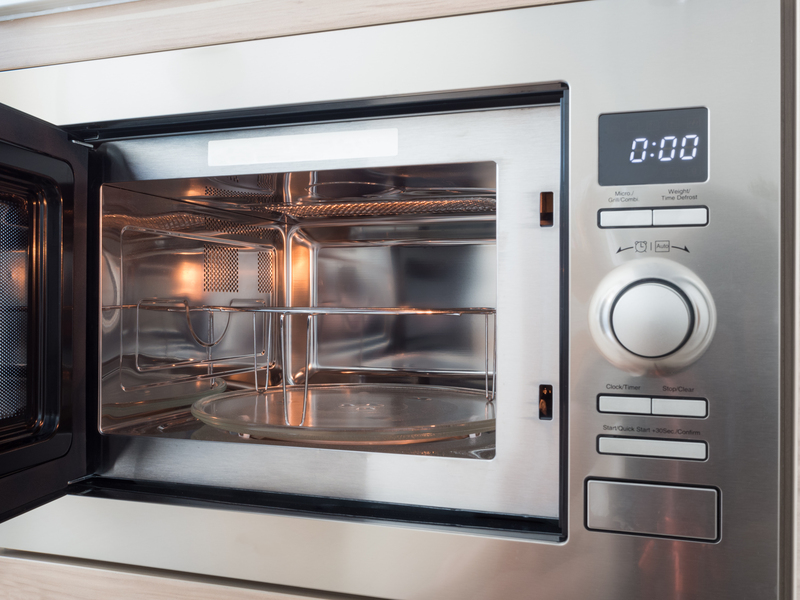How to Keep Your Fridge Fresh and Clean
Posted on 19/03/2025
Maintaining a fresh and clean refrigerator is essential for food safety, efficiency, and longevity of the appliance. With various food items stored inside, it's crucial to take steps to prevent cross-contamination, odor, and bacteria build-up. This comprehensive guide will explore effective strategies to keep your fridge in top condition.
1. Clean Out and Organize Regularly
The first step towards a clean fridge is regular maintenance. Set a schedule to clean out and organize your refrigerator every week or at least every two weeks. Remove all items, check expiration dates, and discard anything spoiled or questionable.
Step-by-Step Cleaning Process
- Remove all food items: Take everything out and place it on your countertop or table.
- Discard expired items: Check dates and dispose of any expired, moldy, or smelly items.
- Remove shelves and drawers: Take out any removable parts for a thorough cleaning.
- Clean the interior: Use a mild detergent mixed with warm water to wipe down all surfaces inside the fridge.
- Wash shelves and drawers: Clean these in your sink with dish soap and warm water.
- Dry thoroughly: Ensure everything is completely dry before placing items back into the fridge.

2. Keep a Check on Temperature
Proper temperature settings are vital for maintaining food hygiene and preventing spoilage. The recommended temperature for refrigerators is between 35-38?F (1.6-3.3?C), while freezers should be set to 0?F (-18?C). A thermometer can help monitor these temperatures accurately.
Why Temperature Matters
- Prevents bacteria growth: Keeping the fridge at or below the recommended temperature retards the growth of harmful bacteria.
- Preserves food quality: Optimal temperatures help in maintaining the freshness and nutritional quality of food.
- Energy efficiency: Correct settings prevent overworking the refrigerator, leading to efficient energy usage and prolonged appliance life.
3. Use Baking Soda for Odor Control
Baking soda is a natural deodorizer that can help keep your fridge smelling fresh. Simply place an open box of baking soda on a shelf to absorb odors. Replace the box every three months for optimal effectiveness.
Additional Odor Control Tips
- Activated charcoal: This can be used similarly to baking soda for absorbing odor without adding any scent.
- Coffee grounds: Place a small bowl of dry coffee grounds in the fridge to neutralize odors.
- Vanilla or lemon: A cloth soaked in vanilla extract or a dish with lemon slices can provide a pleasant aroma.
4. Store Food Correctly
Proper food storage not only keeps your fridge organized but also minimizes the risk of contamination. Follow these guidelines for best results:
Food Storage Tips
- Store meat on the bottom shelf: This prevents juices from dripping onto other foods, reducing the risk of cross-contamination.
- Use airtight containers: Store leftovers and open packages in airtight containers to maintain freshness and prevent odors.
- Keep fruits and vegetables separate: Store these items in designated drawers to keep them fresh longer.
- Utilize the door: Store items like condiments and beverages in the refrigerator door, as these areas are slightly warmer.
5. Practice Spillage Management
Spills inside the fridge can lead to sticky messes and unpleasant odors. Promptly clean up any spills to prevent liquids from hardening or causing stains.
Handling Different Types of Spills
- Liquid spills: Use a paper towel or cloth to wipe up any liquid immediately.
- Sticky spills: For sugary liquids or substances, use a warm, soapy cloth to clean the area thoroughly.
- Solid spills: Collect any solid or semi-solid items and dispose of them properly. Wipe the area clean afterward.
6. Check and Clean Seals
Dirty or damaged seals can reduce the efficiency of your fridge, leading to higher energy consumption and possible food spoilage. Inspect the seals regularly and clean them with a warm, soapy cloth. If seals are worn out or damaged, consider replacing them to ensure a snug fit.
Importance of Clean Seals
- Maintains internal temperature: Good seals help in maintaining the set temperature inside the fridge, keeping your food fresh longer.
- Energy efficiency: Clean, functioning seals prevent cold air from escaping, reducing the energy required to keep the fridge at the desired temperature.
- Prevents mold: Regular cleaning avoids mold and mildew build-up on the seals, which can potentially infect the food inside your fridge.

7. Perform Regular Deep Cleanings
A deep clean every few months is essential for maintaining a spotless and odor-free refrigerator. During this process, unplug the fridge to prevent any electrical issues while cleaning.
Steps for Deep Cleaning
- Unplug the fridge: Always unplug the appliance before starting a deep clean to ensure safety.
- Empty and remove parts: Take out all food items and removable components like shelves and drawers.
- Clean thoroughly: Scrub the interior with a mild cleaning solution, paying special attention to corners and hard-to-reach areas.
- Clean the exterior: Don't forget to clean the exterior, including the top, sides, and handles.
- Check and clean the condenser coils: Dust and debris can accumulate on the condenser coils, affecting efficiency. Use a vacuum or brush to clean these coils carefully.
Conclusion
Keeping your fridge fresh and clean requires a combination of regular maintenance, proper food storage, and hygienic practices. By following the steps outlined in this guide, you can ensure a healthy and efficient refrigerator that keeps your food safe and fresh.
Remember, consistency is key. Regular upkeep not only extends the life of your appliance but also contributes to a healthier kitchen environment. Happy cleaning!

